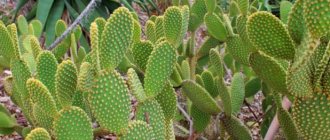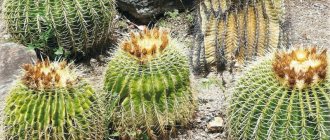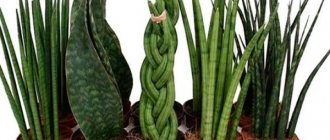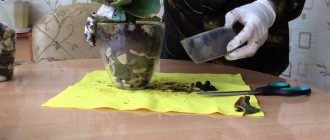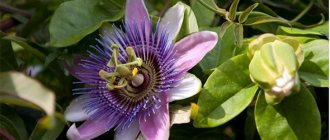Category: Species, Cacti Published 03/18/2019 · Comments: · Reading time: 5 min · Views: 2,183
There is a widespread belief that the homeland of the cactus is a desert, in which for many kilometers there is nothing but sand and wandering camels. Indeed, these inhospitable, thorny plants are primarily associated with desert landscapes. And they came to us from the hot African continent, and in addition, these succulents are able to exist in rocky, lifeless soils, withstanding the scorching sun. However, they are not originally from the Sahara, Gobi or Kalahara. Their habitat is somewhat different, but today it has expanded so much that members of the family are found almost all over the world. What country can boast of being the real homeland of this unusual plant - the cactus?
Description
It’s worth starting with what can generally be called a cactus. You yourself most likely know that the characteristic thorny plant can theoretically take on completely different forms. Considering the confusion that sometimes occurs in biology, it is not surprising if some species that are commonly considered cacti are not actually cacti, and vice versa. So, according to the modern biological classification, cacti or cactaceae are a whole family of plants classified as Carnationaceae, the approximate number of species in total reaches about two thousand.
All these plants are perennial and flowering, but they are usually divided into four subfamilies, each of which has its own characteristic features.
Interestingly, the word “cactus” is of ancient Greek origin, although, looking ahead, these plants do not come from Greece at all. The ancient Greeks used this word to call a certain plant that has not reached our times - at least modern scientists cannot answer what is meant by this term. Until the 18th century, what we now call cacti were called melocacti. Only in the classification of the famous Swedish scientist Carl Linnaeus did these plants receive their modern name.
Now let's figure out what is a cactus and what is not. It is wrong to confuse the concepts of cactus and succulent - the former necessarily refer to the latter, but the latter are a broader concept, that is, they may include other plants. Cacti, like all other succulents, have special tissues in their structure that allow them to store water for a long time. Actually, cacti are distinguished by areoles - special lateral buds from which spines or hairs grow. In a real cactus, both the flower and the fruit are, as it were, a continuation of the tissues of the stem; both organs are equipped with the above-mentioned areoles. Biologists identify at least a dozen more traits that are characteristic only of this family, but it is almost impossible for an ignorant person to see and evaluate them without the appropriate instruments.
If you can mistakenly call many prickly plants a cactus, which in fact are not classified as such, then sometimes you can completely fail to recognize a representative of cacti in green spaces that are in no way similar to the typical indoor version. Suffice it to say that a cactus (from a biological, not a philistine point of view) can turn out to be a deciduous bush and even a small tree. Or it can consist of almost one root with a barely noticeable above-ground part. The sizes, accordingly, can vary dramatically - there are tiny specimens several centimeters in diameter, but in American films you have most likely seen multi-meter branched cacti weighing several tons. Naturally, all this diversity is not grown at home - only those species that meet two basic requirements are usually chosen as indoor plants: they must be pretty and relatively small. Moreover, everything also depends on the region - in some countries species that are practically unknown in our country can be grown on a large scale.
Types of home cacti
The beautiful blooms and variety of shapes of indoor cacti offer many options for interior decor in your home. Let's look at several varieties of home cacti.
Rainbow Hedgehog Cactus
This species is cylindrical or oval in shape, up to 45 cm tall. It is impressive with its color range - pink and purple shades.
This cactus is quite comfortable without shading from the bright sun, on the south and west side. Echinocactus favorably tolerates dry air, but also does not mind periodic spraying with sufficiently warm water.
This breed has an extremely fragile root system, so the inevitable replanting must be extremely careful.
Gymnocalycium friedrichii (Gymnocalycium Michanovich)
This incredibly beautiful species of cactus begins blooming with trumpet-shaped, red, pink and white flowers at a fairly early age. Its wide, elongated stem, gray-green or brownish in color, contains up to 10 thickened, triangular ribs; does not contain lint.
Gymnocalycium is easy to grow at home. It requires a lot of bright light, but in the summer the cactus needs to be shaded from the scorching rays of the sun.
Cleistocactus straussii
The columnar, horizontal plant is covered with thorns and white hairs. The height of this species can reach 1 meter. A special feature is the flowering with closed tubular flowers. An abundance of sunlight and light shade in the scorching sun are mandatory conditions for growing cleistocactus.
Opuntia microdasys (Prickly pear)
It is highly undesirable to touch any type of prickly pear. Its miniature spines with jagged ends prick very painfully. Prickly pears grow up to 30 cm and come in a variety of shapes.
In summer, the cactus is watered abundantly, but during periods of extreme heat, watering is reduced and done only in the evening. In this case, moisture should not get on the stems.
Trichocereus candicans
Can grow up to 1.5 meters. It features white, funnel-shaped, fragrant flowers.
Depending on the species, the stem can grow vertically or obliquely. The length of the spines on the ribs reaches 4 cm, in the center - 2 times longer.
The plant is very hardy and unpretentious, gaining height and expanding easily with plenty of sunlight, warmth and regular watering.
Holiday Cactus (Christmas or Schlumberger)
The plant impresses and pleases with its beautiful flowering in winter, which is unusual for cacti.
Therefore, it is in winter that Schlumberger will need intensive watering. For such a cactus, diffused sunlight is more acceptable. The palette of shades of flowers 7-8 cm long can be very different.
Mammillaria (Mammillaria)
This plant has up to 500 varieties. Mammillaria are covered with long soft spines, like hairs. The stems come in spherical or cylindrical shapes.
This is interesting: Description and characteristics of the Veles pear variety: advantages and disadvantages, features of planting and care
Their characteristic difference from other representatives is the presence of many papillae. Flowers of purple, white, and red tones grow from the axils located between the papillae.
Rebutia miniscula (Tiny rebutia)
These cute little cacti are spherical in shape with a diameter of no more than 10 cm. Tiny Rebutia differs from other similar species in the placement of flowers - not at the top of the stem, but at its very base.
Flowers, as a rule, have a pink, orange, red tint, and even the golden color of the spines of the rebutia makes it especially decorative.
This cactus is very favorable to dry air, but requires mandatory spraying in the morning from a spray bottle. Basically, the plant requires the same conditions as other indoor cacti.
Notocactus ottonis (Notocactus Otto)
Flower growers grow this species not so much for the sake of flowering, but for the interesting structure of the stem with pronounced ribs, on which hard spines look very nice.
Over time, large glossy yellow flowers appear, the diameter of which reaches 8 cm. The result is an expressive contrast against the bright green background of the stem, which adds even more attractiveness to this breed.
Homeland of the thorn
Cacti grow in the tropics, savanna, deserts, and mountains. The homeland of indoor cacti is North and South America. Various species grow in Europe, in tropical Africa and on the island of Madagascar, but the homeland of the indoor cactus plant is the arid regions of the following countries:
- Mexico.
- Argentina.
- Bolivia.
- Chile.
The most primitive species belong to the Pereskieves subfamily, more precisely, to the tribe Pereskieae. They grow in the tropics of America and southern Brazil. The Pereskiev tribes, Maihuenieae, grow in Chile and Argentina. Species of the South American genus Frailea and the Mexican genus Astrophytum have a similar seed structure; they are separated from each other by 2700 km.
About the homeland of succulents and their distribution
Today, these cacti grow on any continent where climatic conditions suitable for them are present. But even where the climate is unsuitable, they are successfully grown in greenhouses and as indoor flowers.
This is interesting! As for the first historical mentions of the country of origin of cacti, back in the second half of the 16th century, the German scientist, “father of botany” Jacob Theodor Tabernemontanus published his own herbal book, which gained enormous popularity. In it, he described some varieties of these succulents, which were native to the shores of South America.
So it turns out that cacti became known outside the country of origin no earlier than the discovery of America by Christopher Columbus. And South America is recognized as the birthplace of the indoor cactus. It was from here that these plants began to spread throughout the planet, taking root even where the climate differs from the usual. Some varieties were first discovered in North America, as well as on the islands of the West Indies.
Rhipsalis baccifera grows not only in America, but also in Africa, Madagascar and Sri Lanka. They got here without human help, because it is believed that the seeds of these plants were carried by migratory birds.
But the most beautiful prickly pear, consisting of flat palm-shaped leaves, can be found in India, the Mediterranean countries, Germany, Austria, Mozambique, on the islands of the Malay Archipelago and even in Australia, thanks to the intervention of human hands. The prickly pear species Opuntia humifusa grows far from its native shores, and not only in the Mediterranean, but also on the shores of Crimea, in the southern regions of the Volga region, on the Russian Black Sea coast, in the regions of Gelendzhik and Novorossiysk.
And although their homeland is in a different place, cacti feel at home almost everywhere, including on home windowsills. Especially if they receive proper care based on their needs.
Geographical location of the homeland of the indoor cactus
Most of us associate these cute, yet menacing, thorny plants with the arid desert conditions that abound in Africa. That is why many ordinary people believe that the place where the cactus is born is the so-called “black” continent.
In fact, the “thorns” prefer desert regions, but not of Africa, but of other continents. Surprisingly, the deserts of America are the birthplace of cacti. More precisely, plants originated from arid places, primarily South and North America. Scientists report that cacti appeared in South America a very long time ago - about 35 million years ago.
Then, about 5-10 million years ago, cacti appeared in the northern part of the continent. To Africa, including the island of Madagascar, and other parts of the world, for example, Asia (the island of Sri Lanka) and Australia, excluding, of course, Antarctica, cacti were naturally transported by birds much later. Europeans were the last to become acquainted with the prickly representatives of the flora.
It is interesting that cacti are found not only in the Mediterranean, but also on the Black Sea coast, for example, on the southern coast of Crimea, in Gelendzhik.
An interesting fact is that throughout the continent, where the color family comes from, the distribution of “spines” is extremely uneven. Cacti cannot be found at all in humid tropical regions, in particular, they are not found in the lands belonging to the basin of the great Amazon River.
But Mexico is famous for its special diversity of species. By the way, of the known two thousand species of “thorns,” just under a thousand can be found in the arid regions of this country.
Many cacti grow in Latin American countries such as Argentina, Peru, Chile, and Bolivia.
Main types of cacti: country of origin determined the development of varieties
Despite the fact that the cactus originates from the hot and arid areas of Central and South America, it has become a familiar inhabitant of many domestic apartments. And, oddly enough, it took root in wildlife quite quickly.
In our area, cactus flowers, whose homeland is Argentina and Bolivia, can be found in the Crimea, especially in the vicinity of Sudak, and some particularly tenacious members of the family have managed to take root even in the Astrakhan region, where the ambient temperature sometimes drops to minus twelve degrees Celsius. .
Experts classify all such plants into four large groups, which are worth understanding a little.
- Opuntiaceae are distinguished by rather simplified, reduced leaves, as well as extremely thin and brittle spines that are covered with tiny serrations.
- Found exclusively in their native Patagonia, they are very small and their foxes grow no more than ten millimeters in length.
- Pereskia species have fully-fledged leaves. Scientists consider such species to be a kind of connecting link between cacti and ordinary leafy plants.
- The most common species in the world are, in fact, cacti, which are securely “nestled” on our windowsills. For the most part, these species have a spherical or cylindrical shape, are covered with spines of different sizes, and bloom with magnificent flowers in the shape of a raster.
It is remarkable that many indoor cacti, whose homeland has long become blurred and uncertain, can be used as a basis for shampoos, medicines, due to their beneficial qualities and properties; perfumes and hormonal products are also made from them. Many tasty and nutritious dishes have already been invented from prickly pear; all parts of the plant are suitable for food, and candied fruits, extremely rich in vitamins, are even made from melocactus and echinocactus.
General information about cacti
Cacti are a relatively young family of plants on our planet;
they appeared at a time when mammals already reigned on the earth. The homeland of cacti is South America, from where they spread throughout the Western Hemisphere. And thanks to migratory birds, some of their species found their way to Africa and Asia. At their core, all cacti are succulents, that is, plants capable of storing water in their stems in case of long periods of drought . A distinctive feature that distinguishes the cactus family is the presence of areoles - special modified branches shaped like buds. It is from the areoles that cacti grow spines, flowers and “babies”, with the help of which cacti carry out vegetative propagation.
Areoles of a grandifolius cactus
Cacti are truly unique plants. Even their photosynthesis proceeds differently than the rest of the plant world: carbon dioxide is collected by the plant at night, and not during the day. This is due to the fact that during the day, in order to avoid moisture loss, the cactus stomata are closed.
The living conditions of cacti are the most extreme. Some of them live in desert areas with destructive changes in daily temperatures and very little precipitation. Others, on the contrary, live in conditions of exceptional humidity that can destroy all other plant species.
The appearance of cacti has always surprised gardeners: the appearance of the plant cannot be called attractive or friendly, but the flowers that appear on it from time to time can capture the imagination of any connoisseur.
Description of the cactus
Cactaceae are a family of perennial succulent plants from the order Caryophyllales.
Divided into four subfamilies. The most numerous genus is Mammillaria.
The word "cactus" comes from the Greek. κακτος, which in classical Greek was used to designate a type of thistle. Carl Linnaeus introduced the word as the name of the genus Cactus in 1737 in his early work Hortus Cliffirtianus, most likely as a shortening of the word melocactus, which was widely used to refer to these plants at the time - choosing thistle as a suitable name for plants known for their thorns. Today this word is used in botany to name the family Cactaceae.
Cacti are plants of the New World, that is, those that originate from South and North America, as well as the islands of the West Indies. In addition to America, the species Rapsilis barrenus is also found in Africa, Madagascar and Sri Lanka, where it is believed to have been brought by migratory birds.
In addition, humans have spread some types of cacti - mainly prickly pear - to all continents except Antarctica. The Opuntia creeping species is widespread throughout the Mediterranean and is found on the coast of Crimea, as well as in the south of the Volga region.
Structural features of cacti
Most cacti look like a "spiny ball" or a column of spines. However, some species have a completely extravagant appearance, and, for example, forest cacti have spines so short and soft that they are almost invisible. Their stems, leaf-shaped, elegantly droop down. The placement of such home cacti in hanging baskets, boxes or flower pots will undoubtedly add something unusual to the decor and decorate the interior of any room.
The peculiarity of the structure of most cacti is that their surface is covered with a special skin, which is called the cuticle. This unusual name comes from the Latin word cuticula, which is translated into Russian as skin. Cuticles are a very special layer of wax-like substance. Thanks to this structure, the cactus stem is under reliable protection. For comparison, we can cite the example of modern vacuum packaging. This in turn significantly reduces the evaporative flow of moisture and prevents the penetration of gases. And certain types of cacti are generally adapted to extract the necessary moisture from humid air. Cacti can be distinguished from other succulents by their modified axillary buds, which are called areoles. The areola (from the Latin word areola - platform) is a peculiar growth similar to a swelling, which is often called a pad. It is from these pads that the cactus can develop flowers and fruits, which in ordinary plants appear from the buds. In addition, the areolas are where the hairs and spines begin. Some types of cacti have pubescent areoles, while others are simply bare. There are cacti in which one areola contains up to a hundred or even more spines.
What are the benefits of succulents?
Cacti are used in many areas. Most species can be eaten or used as animal feed. There is also the famous blue agave, from which tequila is made.
Cereuses are used as a building material from which fences are made. Cacti are used in the manufacture of shampoos, vitamins, and deodorants. Furniture, window frames, and doors are made from the stems of Helianthocereus pasacanensis.
Where do cacti grow in nature: habitat conditions
The homeland of the prickly plant cactus (from the Greek cactos) is South and North America. The center of family formation is still considered to be South America, from where they spread to the North American continent. Where cacti grow, there can be completely different conditions, because these plants have a huge distribution area, covering different natural zones. This in itself determines a wide variety of plant growth conditions: climatic, zonal and soil. Cacti inhabit tropical forests (epiphytic species growing on tree trunks), savannas, various types of deserts and semi-deserts, and in the mountains they rise to an altitude of 4500 m above sea level. Where else do cacti grow in the wild? Most of these succulents are adapted to life in desert conditions, with little rainfall and sharp temperature changes from day to night. Particularly harsh environmental conditions for cacti are characteristic of high-mountain deserts with their negative night temperatures and the difference between day and night temperatures on the soil surface up to 45°. To the north, the range of cacti extends to 56° N. sh., and south to 54° S. w. The extreme points of the range are reached mainly by representatives of the Opuntaceae subfamily.
The habitat of cacti across continents is extremely uneven. The greatest species diversity is characteristic of Mexico, the mountain deserts of Peru, Chile, Argentina and Bolivia.
Cacti are plants that have high ecological plasticity. Certain signs of cacti's adaptability allow them to survive not only in North and South America, but also in various natural zones of other continents. Thus, some types of prickly pear were brought to Western Europe and successfully acclimatized. In the former USSR, prickly pears were acclimatized in the Crimea and Astrakhan region, as well as in Turkmenistan. Some types of epiphytic cacti are found in the forests of Africa, Madagascar, Sri Lanka and the islands of the Indian Ocean. However, it is believed that they were brought to these places by humans.
Natural conditions of the homeland of the home cactus
If we talk about the natural conditions that these perennials prefer, then basically, as mentioned above, these are arid areas. By the way, there are also species that prefer not only mountain and desert regions, but also steppes.
Even more - epiphytic cacti prefer tropical forests with high air humidity. As for the acceptable soil composition in the homeland of the indoor cactus, these are usually poor and light soils. The soil is characterized by a small amount of humus, but it contains an abundance of mineral salts.
But the types of cacti that can be found in forests and steppes grow well on heavy clay soils.
It is also interesting how differently plants with thorns grow. Most often, entire thickets are found. Some species form such dense forest colonies that it is simply impossible to get through. This is primarily characteristic of carpegia and turbinicarpus. There are representatives of the cactus family that prefer to “settle” at large distances from each other. Sometimes cacti are placed locally in columns or rows.
The shape of the green “hedgehogs” that are found in America is also varied: spherical and slightly elongated, straight, bush-like, flat or voluminous, some species even with real leaves or with bare roots.
Houseplant cactus: the birthplace of the plant and the history of its distribution
Today, numerous representatives of the prickly brethren have very successfully spread throughout the world.
We can say that they now grow on every continent in every part of the world, not even counting those that take root on window sills and flower beds.
For example, the brightest representative of cacti, prickly pear, thrives in Spain and India, Italy, France, Germany, Austria, Mozambique, Bali and has even reached Australia. However, the birthplace of the cactus is not in these countries.
The first historical mentions of the country of origin of cacti date back to the distant sixteenth century. In 1958, the brilliant German scientist, whom posterity would call the “father of botany,” Jacob Theodor Tabernemontanus, published his famous herbal book. It was there that for the first time various types of cacti were described as exotic plants from the distant shores of South America.
Thus, it turns out that these plants became known no earlier than Christopher Columbus discovered America, and there is a very specific answer to the question of where the homeland of the cactus is.
That is, the homeland of the domestic cactus is South America, from where it slowly spread throughout the planet, and even in rather harsh external conditions, where such plants, by definition, could not grow, spiny green hedgehogs found their place in people’s apartments and houses, but this will happen much later, when the homeland of the cactus plant is already far behind him.
The cactus and its homeland were a real curiosity for European residents in the sixteenth and seventeenth centuries, but the locals, for example, the Aztec Indians, managed to very successfully use this forbidding plant for a wide variety of purposes.
These amazing plants, more like aliens, were eaten, used to treat a wide variety of diseases, and some people practicing magical rituals, without thinking about the homeland of the cactus, even considered it a guide to other worlds, a source of spiritual and mystical power that connects our world with the otherworldly.
In our country, the cactus, and the plant’s homeland of Bolivia, Argentina and Peru, Mexico and British Columbia, appeared much later, around the beginning of the eighteenth century, when the so-called Apothecary Garden opened in St. Petersburg, where various curiosities were grown, along with medicinal plants Russia and other countries.
The real homeland of the cactus, as a houseplant, was a country not very similar in climate to ours, so it was necessary to create special conditions for its growth, and by the beginning of the nineteenth century, when the vegetable garden was transformed into the Imperial Botanical Garden, there were already more than two hundred and seventy species there and types of cacti.
Caring for home cacti
Due to the diversity of varieties and subspecies, it is difficult to develop a single care scheme for all cacti. But there are general recommendations that you can follow.
Keep the room temperature moderate. The winter minimum is about +13C. Although most varieties easily tolerate short-term frosts, there is no need to abuse this. Home cacti tolerate maximum temperatures up to +35C without problems.
Cacti always need light, especially in winter, but direct scorching sunlight is still best avoided. During the hot summer months, create light shade for flowerpots on the south side
This is interesting: Sulfur for grapes: methods of using colloidal sulfur to treat plants
Do not place a newly purchased cactus near other plants. The first step is a two-day quarantine, adaptation and transplantation.
Temperature
The optimal temperature depends on the specific species. On average, it is 20-25 degrees; in summer it should be higher. During the winter, some varieties go into hibernation, while others, on the contrary, can bloom. For flowering plants, it is important to maintain the temperature and light level even in December-January.
Lighting
Cacti definitely need light. They are used to intense sun. This is indicated even by the structure of the trunks with ribs, spines, hairs and other protective mechanisms. If there is not enough light, the cactus turns pale, turns yellow, and becomes thinner. New shoots grow weak and sluggish. Varieties that go into hibernation must be carefully brought out of it by spring. Shade the seedlings at first, otherwise burns may appear on the surface.
Cactus pots
Cactus pots can be ceramic or plastic. The size of the pot is determined by the dimensions of the plant, and the height of the pot should exceed the length of the cactus root system by 15-20%, and the width of the pot by one and a half times. In other words, the container for the cactus should be narrow and deep enough - the cactus will feel more stable in it, and the plant will have to be watered less often than when grown in a flat pot.
In addition, for medium and small sized cacti, plastic pots are preferable, because porous ceramics contribute to high water evaporation, alkalization and salinization of the substrate.
Soil for cacti
Cacti need a substrate that is loose, porous, water- and air-permeable, slightly acidic - pH 6.0. You can purchase ready-made soil for cacti at a flower shop, or you can make it yourself from equal parts of leaf soil, coarse and well-washed river sand and turf soil with the addition of a small amount of brick chips or charcoal. For old and columnar cacti, as well as for plants with turnip roots, add low-fat clay to the soil.
Epiphytic cacti need the addition of humus soil or peat - up to 1/3 of the volume. It is advisable to add a little lime in the form of pieces of gypsum or old plaster into the soil for cacti with white thorns. If you make the soil incorrectly, the plant may well experience root rot.
Watering and humidity
In spring, the watering scheme is standard - as the top layer of soil dries. Take warm, settled water without impurities. As soon as it starts to get colder, gradually reduce watering. In autumn and winter, feel free to leave the soil almost dry. The amount of water at this time is minimal so that the root does not dry out and the plant does not wrinkle.
Contrary to stereotypes, cactus should not be sprayed, with the exception of some individual species. The air may be dry, but it must be fresh.
Fertilizers and fertilizing
Salts of potassium, nitrogen, calcium and phosphorus are used for feeding. Fertilize only during the growing season, never during the dormant season. Potassium is responsible for immunity and resistance to diseases or external factors. Calcium – for the normal development of the trunk, the formation of buds and the ripening of seeds. Phosphorus - for the growth of flowers and the rooting of cuttings and “babies”. Nitrogen – for growth and development in general.
Do not apply fertilizer immediately after replanting the plant or if its roots are damaged. It is most convenient to introduce impurities in the form of a solution. Salt is mixed with warm, settled water. It is recommended to water cacti with this solution in the second half of a cloudy day.
Pest and disease control
The most common disease that affects cacti is stem rot. It appears as brown spots. To get rid of it, you will have to remove the damaged areas and treat the plant with disinfectants. The most common reason is improper living conditions, and especially too high humidity.
Some varieties are very difficult to bring to flowering. This is not a disease. They simply require conditions that are as close to natural as possible, which are not so easy to reproduce in an apartment. Remember that most plants bloom only on new growth, and for this you need to maintain a regime of activity and rest. Also, intensive flowering is stimulated by a cramped pot. If it is too spacious, most of the resources will go to the development of the rhizome rather than the ground part.
Transplantation and propagation
Growing a cactus from seeds at home is time consuming and impractical. But in most varieties, even small cuttings take root quickly and easily. Do this in the warm season so as not to worry about maintaining temperature and humidity conditions. First, dry the cuttings a little, leaving them for a couple of days, and then plant them in peat compost.
If you want to start seeds, then do not forget about the greenhouse effect for seedlings, and most importantly, observe the temperature regime of +22...+27C.
Young cacti are replanted annually, adults - only as needed. To do this, take a larger pot than the previous one. It is better to carry out such procedures in the spring. Be careful not to damage the delicate root. Also make sure that the cactus stem does not go underground - there it begins to rot.
Trimming
It is possible, and sometimes even necessary, to prune cacti. For example, if the plant began to rot, grew too tall and elongated, became deformed, or grew incorrectly. Always trim off any rotten or damaged areas, otherwise the entire plant will die.
To determine whether it is time to trim the top, watch for the following symptoms: the appearance of spots on the trunk, yellowing and loss of shine, the plant skewing on its side, lethargy and contraction, stopping growth or falling out of season, too much weight or height, due to which The pot may turn over. You can use regular alcohol to disinfect instruments. And treat the cut areas with crushed coal. After pruning, leave the cactus for 1-4 weeks in a dry place without direct sunlight.
Sources:
- https://krrot.net/kaktusu-foto-nazvanie/
- https://felisov.ru/sad/rodina-kaktusa-komnatnogo-rasteniya.html
- https://hobbytrade.ru/master-class/kaktus-kak-domashnee-rastenie.html
- https://ratatum.com/vidy-domashnih-kaktusov-foto/
- https://womanadvice.ru/gde-rastut-kaktusy
- https://womanadvice.ru/rodina-komnatnogo-kaktusa
- https://Trizio.ru/domashnie-kaktusy-90-foto-815
- https://lafoy.ru/domashnie-kaktusy-95-foto-vidy-53
- https://floristics.info/ru/stati/3212-kaktusy-v-domashnikh-usloviyakh.html
Where are you from?
Since the cactus is not one species, but many varieties, it is difficult to identify any common homeland for all this biological abundance. It is often said that the cactus owes its origin to the entire continent of North and South America, where it grows in arid conditions from the arid Wild West of the United States to Argentina and Chile. For most species this statement is true, but cacti also include some species that appeared in continental Africa and Madagascar. In addition, through the efforts of Europeans, these plants spread all over the world, so in some warm countries of Europe, some species are also found in the wild. Even in the south of the Russian Black Sea region such plantings can be found.
However, Mexico is considered to be a kind of capital of cacti. First of all, there are really a lot of them on the territory of this country; the plant is found almost everywhere, even in the wild, while about half of all known cactus species grow here. In addition, in most regions of their origin, cacti grew wild, while the ancestors of modern Mexicans (not to mention our contemporaries) actively bred some species for various needs, turning the plant into an indoor one. Nowadays, representatives of the cactus family as indoor plants around the world are perceived exclusively as decorative decorations. The ancient Mexicans also used this property of green spaces, but the possible use of cacti was not limited to this.
From the sources of the Spanish conquerors and the legends of the local Indians, it is known that different types of these plants could be eaten, used for religious ceremonies and as a source of dyes. In some regions, cacti can still be used for the same needs. For the Indians, the cactus was everything - they made hedges from it and even built houses. European conquerors were not overly concerned with the classification of crops grown by the conquered peoples, but information has reached us that at least two species of cacti were grown in Central America for sure.
Today, this plant in its various forms is considered the national symbol of Mexico, so if one country is considered its homeland, it would be this one.
There is also a theory according to which cacti originally appeared in South America. According to the authors of the assumption, this happened about 35 million years ago. These plants came to North America, including Mexico, relatively recently - only about 5-10 million years ago, and they came to Africa and other continents even later, along with migratory birds. However, fossilized remains of cacti have not yet been found anywhere, so such a point of view still needs to be confirmed by weighty arguments.
Natural conditions of the cactus habitat
It is known that wild cacti are more preferable to arid semi-desert regions, as well as to the deserts of Africa, Asia, South and North America. In addition, you can meet them on the Mediterranean coast and in Crimea.
Cacti live in the following natural conditions:
1. With sharp fluctuations in day and night temperatures. It is no secret that in deserts it can be very hot during the day and too cool at night; there are sudden temperature changes of up to 50 degrees.
2. Low level of humidity. In the regions where cacti live, up to 300 mm of precipitation falls per year. However, there are some species of cacti that live in tropical forests where humidity levels are high, around 3500 mm per year.
3. Loose soils . Cacti can also be found on loose soils that contain large amounts of sand. Moreover, such soils usually have an acidic reaction.
The habitat of the cactus, how did their adaptation occur in the process of evolution?
Due to low rainfall, the cactus family has a very fleshy stem as well as a thick epidermis. It stores all the moisture during drought. In addition, cacti have spines, a waxy coating on the stem, and ribbing of the stem, all of which prevents the evaporation of the cactus’s moisture. In addition, most types of cactus have a very developed root, it goes deep into the soil, or simply spreads to the surface of the earth to collect moisture.
How did you get to Russia?
Like many other American cultures and inventions, the cactus came to Russia indirectly, through Western Europe. Unlike many other continents, historically cacti did not grow in Europe at all - even those species that do not remind us of the usual “thorn”. Some travelers might have seen something similar in Africa or Asia, but in these regions adjacent to Europe the species diversity of cacti was not very good. Therefore, it is generally accepted that Europeans became acquainted with these plants at the turn of the 15th and 16th centuries, when America was discovered.
For European colonialists, the appearance of a new type of plant turned out to be so unusual that cacti were one of the first plants brought to Europe.
As mentioned above, by that time the same Aztecs had already used some species of this family for decorative purposes, so beautiful specimens that found their way to the Old World soon became the property of wealthy collectors or avid scientists. The London pharmacist Morgan can be considered one of the first lovers of cacti - at the end of the 16th century he already had a full-fledged collection of cacti alone. Since the plant did not require special care, but had a non-trivial appearance, it soon became an adornment of private greenhouses and public botanical gardens rapidly gaining popularity throughout the continent.
Cacti appeared in Russia a little later, but rich people, of course, knew about them from their European trips. They really wanted to see the overseas plant in the St. Petersburg Botanical Garden, for which purpose a special expedition was even sent to Mexico in 1841–1843, led by Baron Karvinsky. This scientist even discovered several completely new species, and some of the specimens he brought were worth twice as much in gold equivalent as they weighed. Until 1917, the Russian aristocracy had many private collections of cacti that were of real scientific value, but after the revolution, almost all of them were lost. For many decades, the only Russian cacti remained those preserved in large botanical gardens in cities such as Leningrad and Moscow. If we talk about the widespread distribution of cacti as houseplants, then in the Soviet Union a similar trend emerged around the late 50s of the last century. Some clubs for cactus lovers have existed continuously since those times; even a special term “cactusist” has arisen, indicating a person for whom these succulents are the main hobby.
Sources
- https://stroy-podskazka.ru/kaktusy/rodina/
- https://pion.guru/rasteniya/rodina-kaktusa
- https://flora-doma.ru/kaktusy/rodina-kaktusov/
- https://flordecor22.ru/vidy-tsvetov/kaktus-rodina-rasteniya.html
- https://orhide.ru/?p=8107
- https://pristor.ru/creda-obitaniya-kaktusa-kaktus-prisposoblennost-k-srede-obitaniya/
[collapse]
